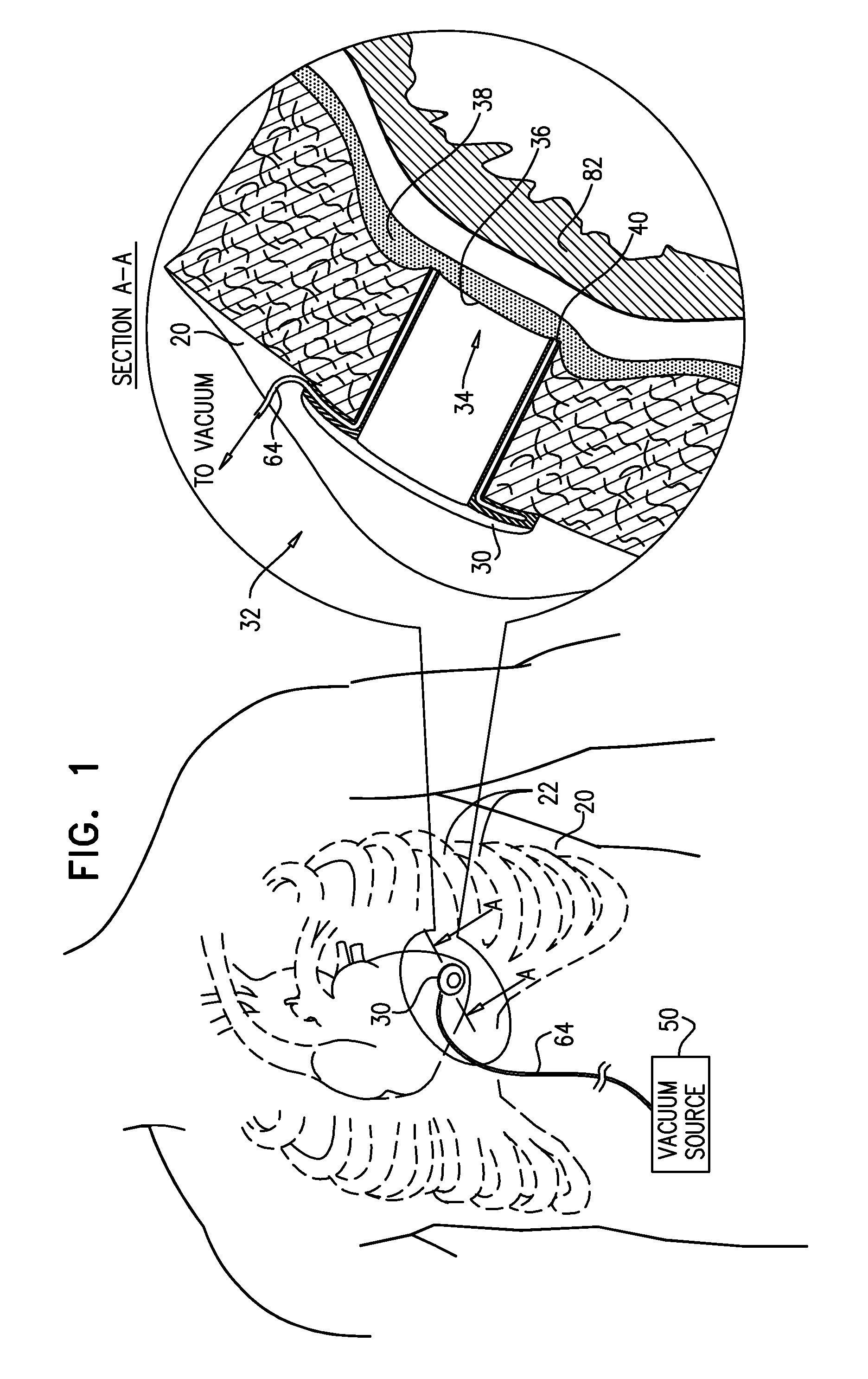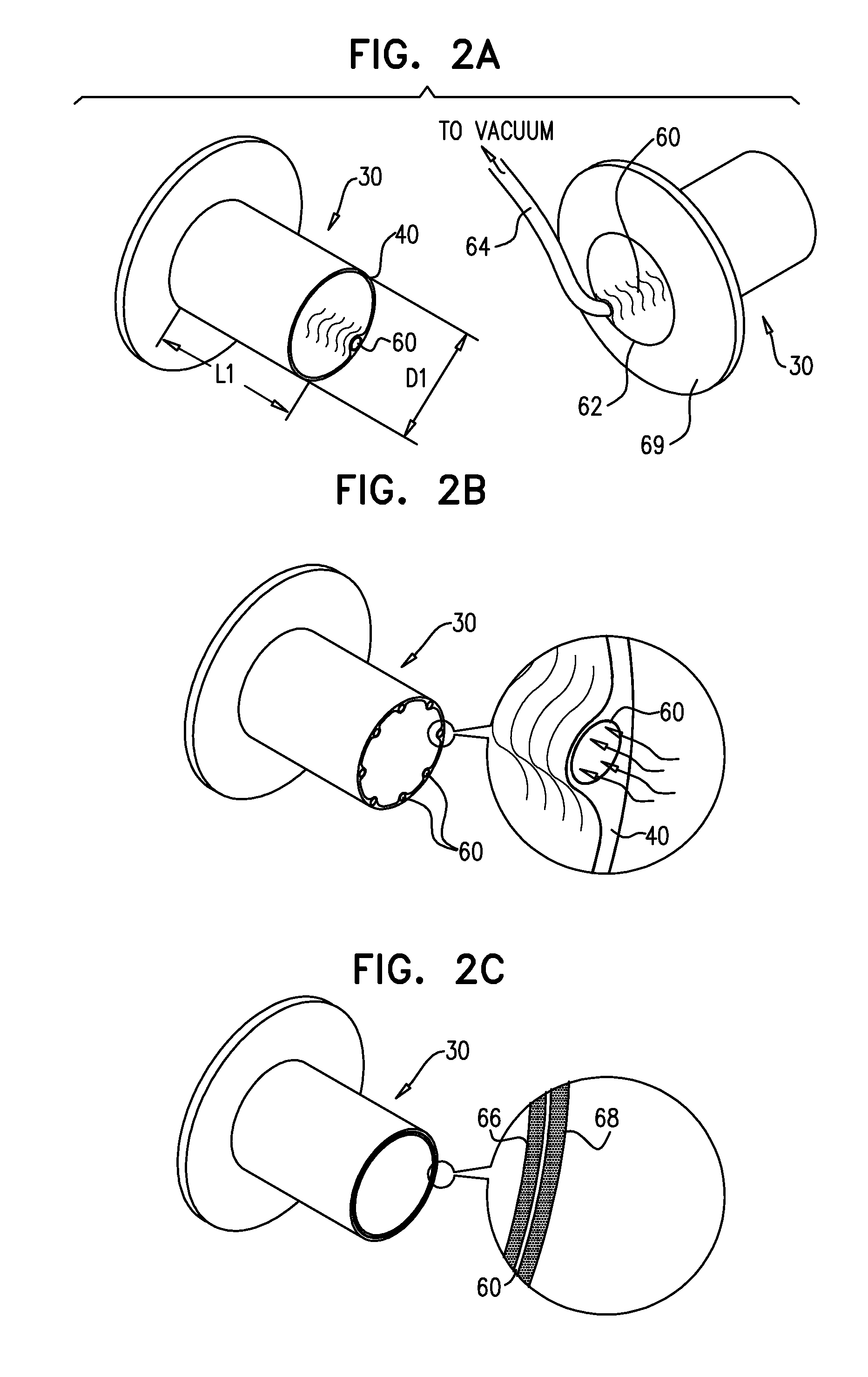Surgical techniques and closure devices for direct cardiac catheterization
a technology of surgical techniques and closure devices, applied in the field of minimally invasive surgical tools, can solve the problems of tearing of heart tissue in older patients, on whom cardiac procedures are most commonly performed, and achieve the effect of reducing the risk of damaging heart tissue and increasing the inwardly-directed pressur
- Summary
- Abstract
- Description
- Claims
- Application Information
AI Technical Summary
Benefits of technology
Problems solved by technology
Method used
Image
Examples
Embodiment Construction
[0170]FIG. 1 is a schematic illustration of a first step of a transapical surgical procedure, in accordance with an application of the present invention. The transapical surgical procedure is typically performed to form a passage through the left or right ventricle of a beating heart, near the apex of the ventricle. A catheter is inserted through the passage into the ventricle, and is used to access the heart for performing a medical procedure, such as valve replacement (e.g., aortic or mitral valve replacement), or valve repair (e.g., atrial or mitral valve repair).
[0171]A surgeon begins the procedure by making a small incision in a chest wall 20 between two ribs 22, e.g., between the fourth and fifth ribs, or between the fifth and sixth ribs, depending on the location of the apex in the particular patient, typically after administering local anesthesia. The surgeon passes an outer tubular tool 30 of a transapical surgical system 32 through chest wall 20. Typically, the ribs do not...
PUM
 Login to View More
Login to View More Abstract
Description
Claims
Application Information
 Login to View More
Login to View More - R&D
- Intellectual Property
- Life Sciences
- Materials
- Tech Scout
- Unparalleled Data Quality
- Higher Quality Content
- 60% Fewer Hallucinations
Browse by: Latest US Patents, China's latest patents, Technical Efficacy Thesaurus, Application Domain, Technology Topic, Popular Technical Reports.
© 2025 PatSnap. All rights reserved.Legal|Privacy policy|Modern Slavery Act Transparency Statement|Sitemap|About US| Contact US: help@patsnap.com



